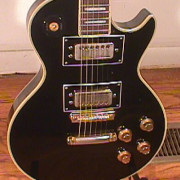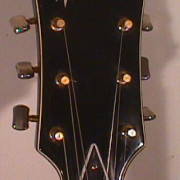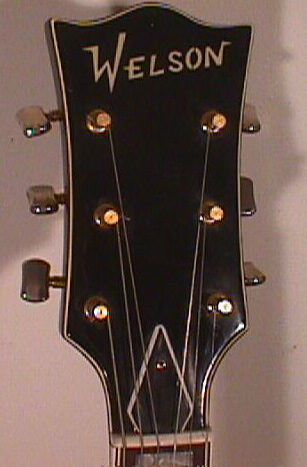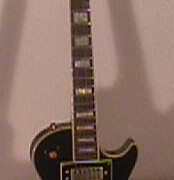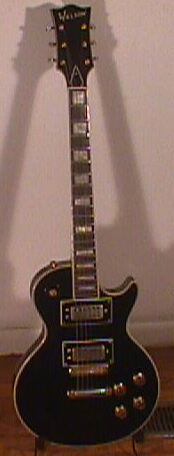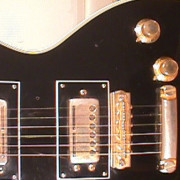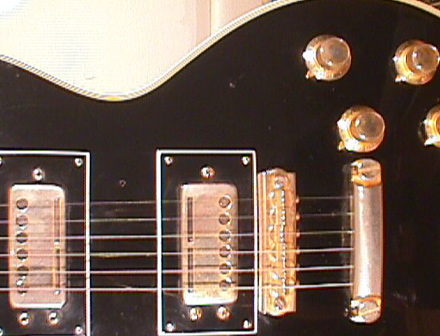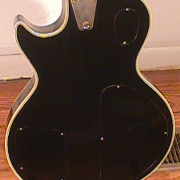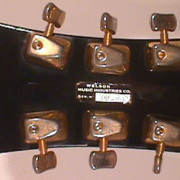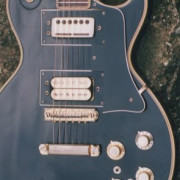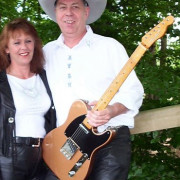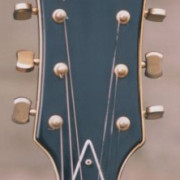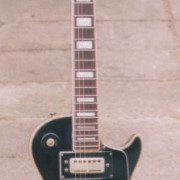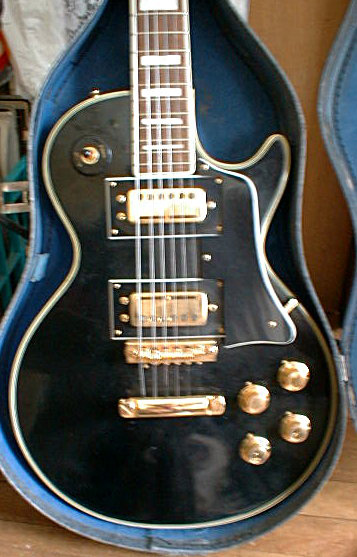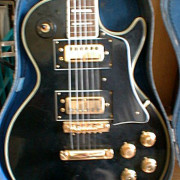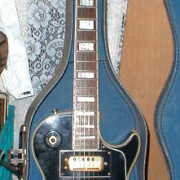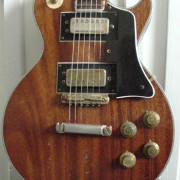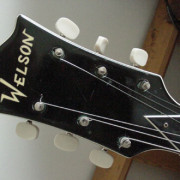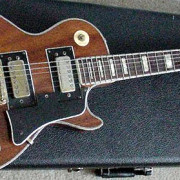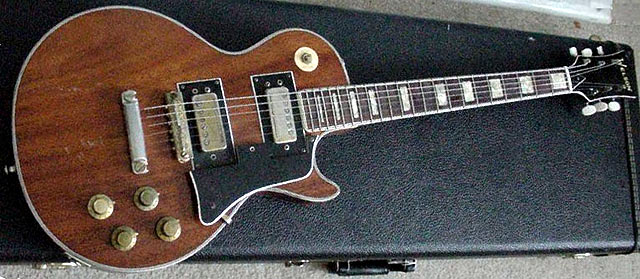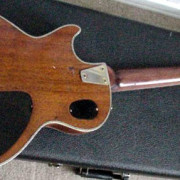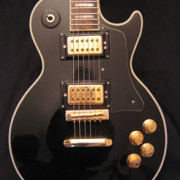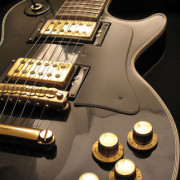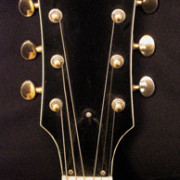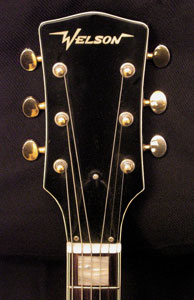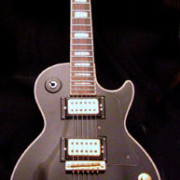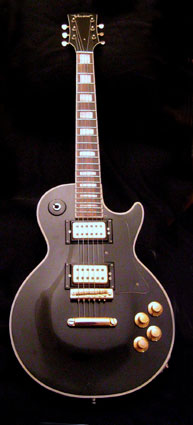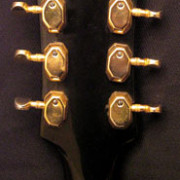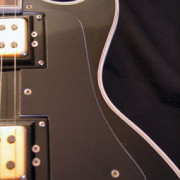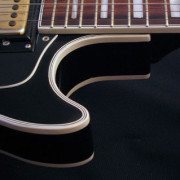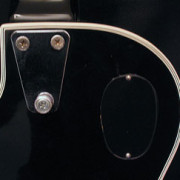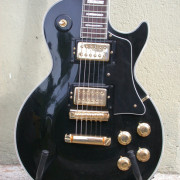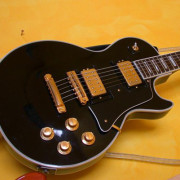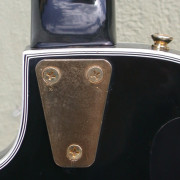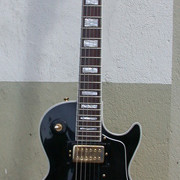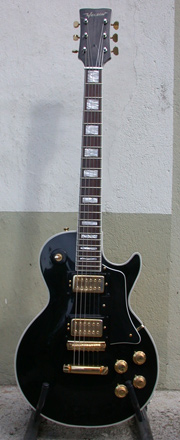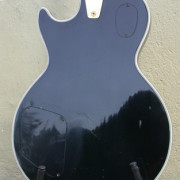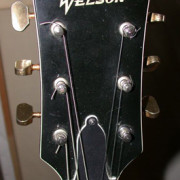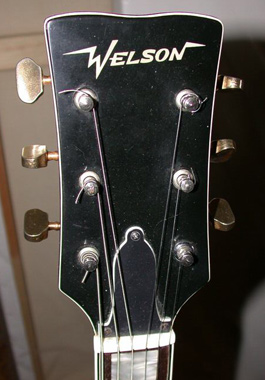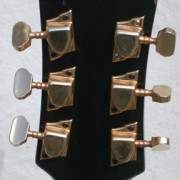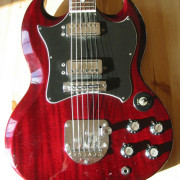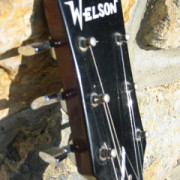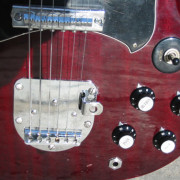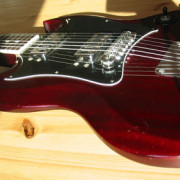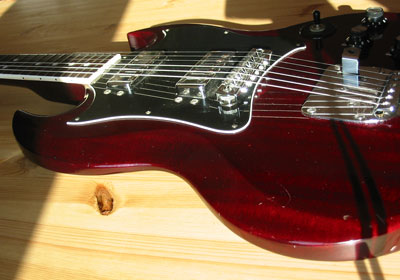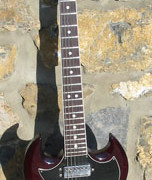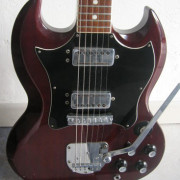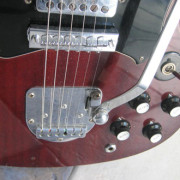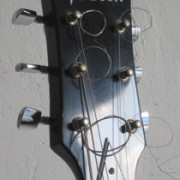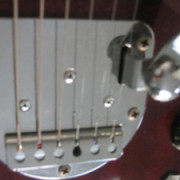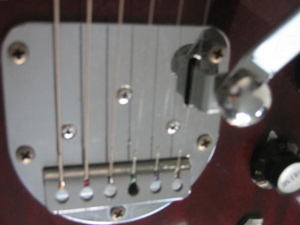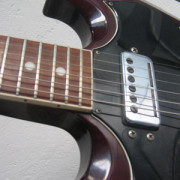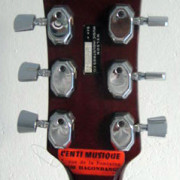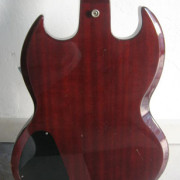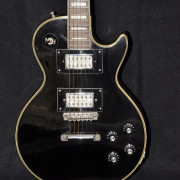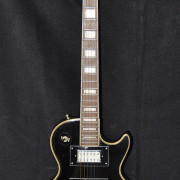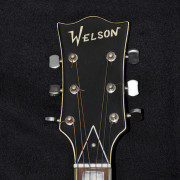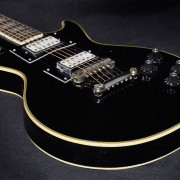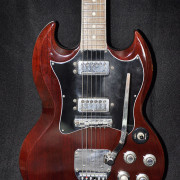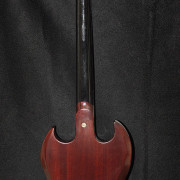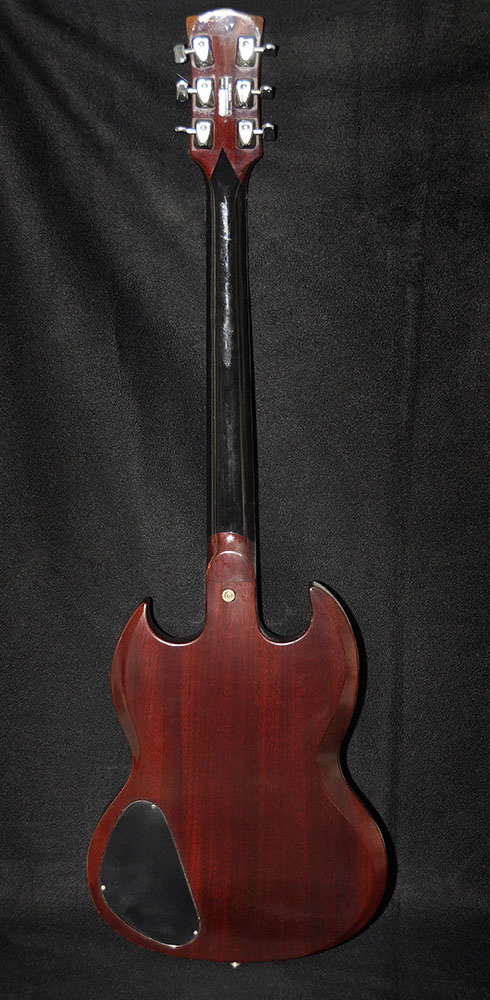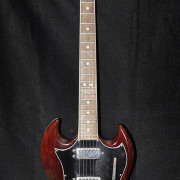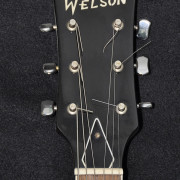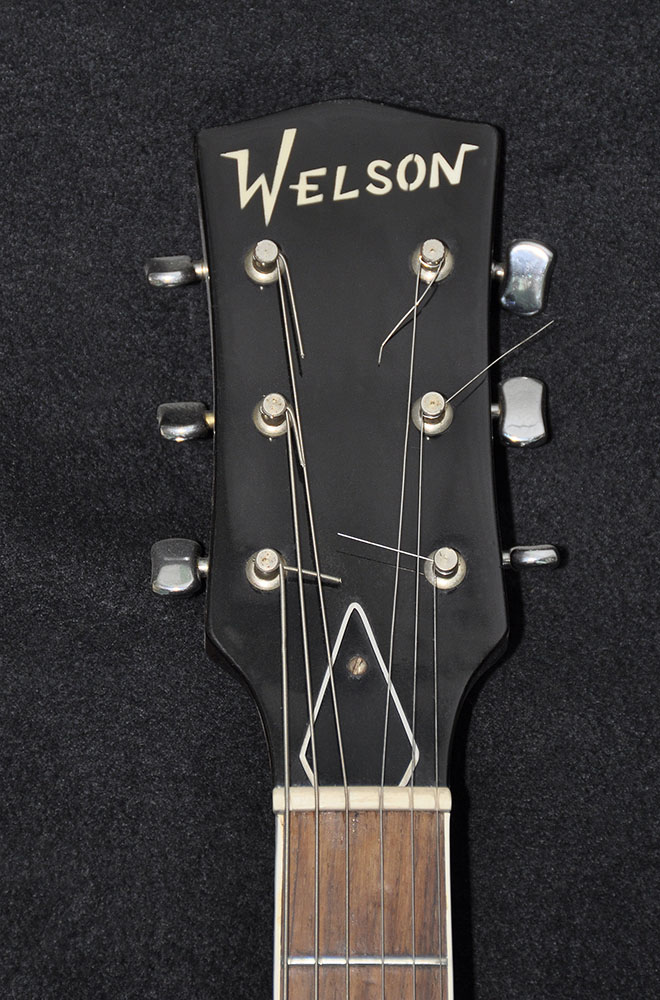Welson: Les Paul and SG Copies
by Jack Marchal
1970 ( ?) LP copy, black
After the popularity of Fender-ish designs in the years 1961-64 and the semi-acoustic wave of 1965-67, the tremendous success of the Gibson Les Paul started a new phase in 1968. With the normal delay from demand identification to new product development and manufacturing, all major guitar makers brought on the marketplace Les Paul inspired models in the early 70’s.
Being already clearly influenced by Gibson concepts and having pioneered in Italy the use of modern humbuckers as soon as 1967, Welson was certainly among the first ones in Europe to respond to the new trend. The early version shown here can in my opinion be assigned to the year 1970 (if not 1969).
The bridge looks like a German-made item, the tailpiece and the three-bolt neck plate are specific to that series. Other hardware components are consistent with those fitted on Welson hollow bodies of the late 60’s, first of all the mini/medium humbuckers, the Italian made imitations of Van Ghent tuners and the truss-rod plate shaped like an imperfect triangle.
On the back, in addition to the usual plastic covers underneath the control zone and the selector, there is a large plastic plate covering a cavity milled in the body. Some kind of a tone chamber, whose role is mostly to reduce weight.
Bert, of the ‘Whatever’ Country Duo
A Dutch country guitarist and singer, Bert of the duo ‘Whatever’ had this Welson Les Paul copy as his first serious instrument. As any self respecting country musician he mainly plays a Telecaster on stage but he still owns the Welson.
“For a guitar in this price range it plays wonderfully. The sound is a bit on the thin side. Even so it’s a very well built guitar. I had it in the attic for ten years, and even after all this time it did not need to be tuned!”
The neck pickup ws changed to a DiMarzio. Bert also added a phase switch and a coil split.
Another Welson copy of a Les Paul Custom Black Beauty. Only differences from the previous version are the truss-rod plate, now shaped like a perfect triangle, and the nice octogon tuner covers that surface again in the Welson range after an absence of several years.
The headstock is closely reminiscent of Crucianelli hollow-bodies of the late 60’s. I suppose that the maker had recourse to available unused inventories in order to cut development time and cost. Welson was not alone to do so. Many Eko and Godwin models from those years feature that same headstock. It will also be recycled a couple of years later on the first Les Paul imitations issued by Gherson. That tells volumes about the crisis of over-production for Crucianelli/Vox necks in the late 60’s.
All Welson LP copies of 1970-71 have a serial number between 300,000 and 300,800 (when it’s still there, cause it’s stamped on a label that is applied on the back of the headstock but is often missing). Which means that less than two of those guitars were made per workday. At that time the focus in Welson’s manufacturing program had definitely shifted to combo organs and other electronic keyboards.
1971 (?) Les Paul copy, natural mahogany
Nearly all Welson LP knockoff’s imitate the Les Paul Custom ‘Black Beauty’. Here a welcome exception that rather replicates the look of the most successful European Les Paulish model, the Hagström Swede, for which natural (or very slightly stained) mahogany was the favourite finish.
Back in the 70’s everything had to look environment-friendly and “natural”. Hairs and beards were allowed to grow naturally undisturbed, girls had neither bra nor make-up, macrobiotic diet was blessed, chemical dyes were cursed. Including on guitars. A typical phenomenon of those years was the natural finish (added in 1972 in Fender’s standard color chart) on solid-bodies. The very conservative Gibson company didn’t yield to that trend but its Les Pauls were nevertheless hugely popular because of their ability to overdrive a pre-amp without a pedal — distortion also had to be “natural”.
Thanks to the light wood shade of this Welson the large black plastic plate covering the cavity of body back shows conspicuously. The tuners might not be necessarily original (grommets are missing) ; they have some Italian legitimacy though: they are of the special model made by Van Ghent for all Eko Ranger VI acoustics from 1971 on.
1971-72 (?) SG copy
Another SG-inspired Welson, with just the same appointments as the previous one. The old style humbuckers put it in the same generation as the 1971 LP copies while the sober headstock shape comes close to the 1972’s Welson LP’s. The perfect triangle truss-rod plate is typical of that transition time. Therefore it must be a 1971/1972.
(Of course, you understand that when I say ‘1971’ it might as well be 1970 or 1972. Dating a Welson guitar is always an art of approximation.)
A synthesis of the Gibson SG concept: the humbuckers and the enlarged pickguard hint at the post-1965 SG Standard, the bound fretboard with dot markers leans towards the SG Deluxe. The general impression is borderline plagiarism, especially the control knobs and the true-to-original bevelling of body edge.
Mind you, the neck is glued-in. First set-neck on a Welson electric since 1964. The vibrato remains the old device introduced that same year, virtually unchanged.
The Italian made tuners with octogon covers have specifically shaped buttons, also found on various high end Vox semi-acoustic guitars (Ultrasonic, Aristocrat, Viper, Saturn VI).


